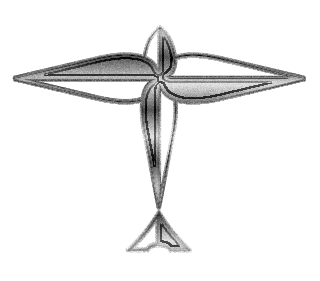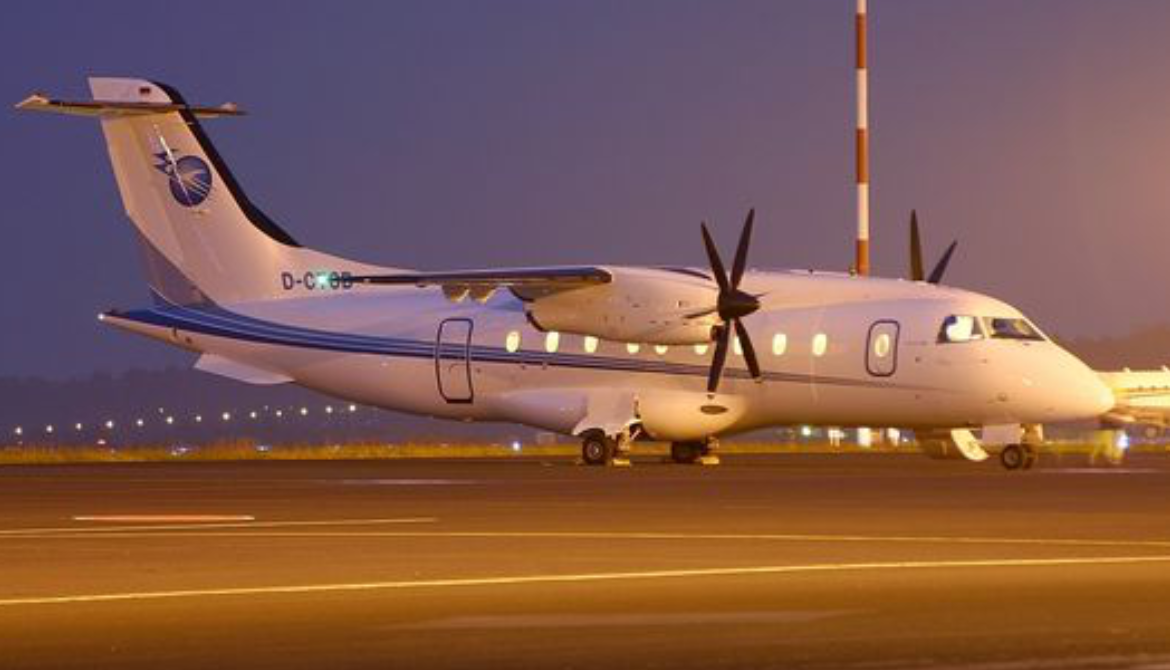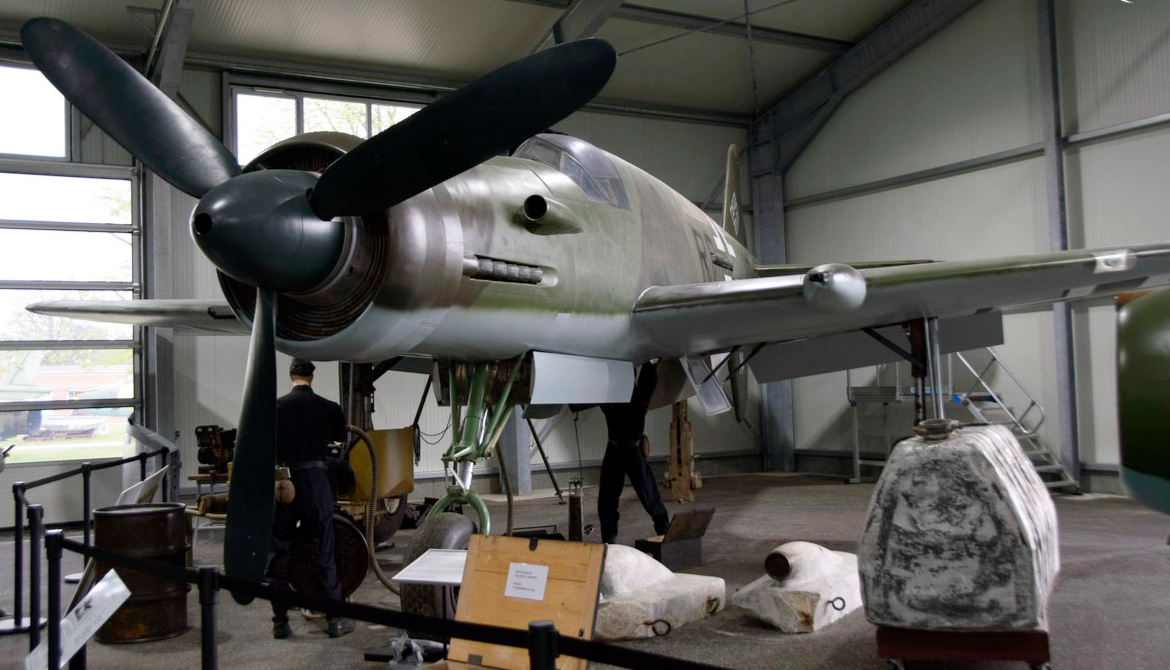Dornier 335 Pfeil "Arrow"
Role Fighter-bomber
National origin Nazi Germany
Manufacturer Dornier Flugzeugwerke
First flight 26 October 1943
Introduction 1944
Retired 1945
Status Retired
Primary user Luftwaffe
Produced 1944–1945
Number built 37
.
History Dornier Flugzeugwerke.
Dornier 335 Pfeil "Arrow"

The Dornier Do 335 Pfeil ("Arrow") is a heavy fighter built by Dornier for Germany during World War II. The Pfeil's performance was predicted to be better than other twin-engine designs due to its unique push-pull configuration and the lower aerodynamic drag of the in-line alignment of the two engines. It was Nazi Germany's fastest piston-engined aircraft of World War II. The Luftwaffe was desperate to get the design into operational use, but delays in engine deliveries meant that only a handful were delivered before the war ended.
The origins of the Do 335 trace back to World War I when Claude Dornier designed a number of flying boats featuring remotely driven propellers and later, due to problems with the drive shafts, tandem engines. Tandem engines were used on most of the multi-engine Dornier flying boats that followed, including the highly successful Do J Wal and the gigantic Do X. The remote propeller drive, intended to eliminate parasitic drag from the engine entirely, was tried in the innovative but unsuccessful Do 14, and elongated, tubular drive shafts as later used in the Do 335 saw use in the rear engines of the four-engined, twinned tandem-layout Do 26 flying boat..
Flight test
Dornier Pfeil 

Do 335 tested in the US, and today the only surviving example The first 10 Do 335 A-0s were delivered for testing in May. By late 1944, the Do 335 A-1 was on the production line. It was similar to the A-0 but with the uprated DB 603E-1 engines of some 1,324 kW (1,776 hp) take-off power rating apiece on 87 octane "B4" lignite-derived synthetic fuel, and two underwing hardpoints for additional bombs, drop tanks or guns. It had a maximum speed of 763 km/h (474 mph) at 6,500 m (21,300 ft) with MW 50 boost, or 686 km/h (426 mph) without boost, and climbed to 8,000 m (26,000 ft) in under 15 minutes. Even with one engine out, it reached about 563 km/h (350 mph).
Delivery commenced in January 1945. When the United States Army overran the Oberpfaffenhofen factory in late April 1945, only 11 Do 335 A-1 single-seat fighter-bombers and two Do 335 A-12 trainers had been completed. The two-seater trainer version was called Ameisenbär ("anteater").
0
KmCeiling
0
KmCombat RANGE
0
Km/hAircraft Speed
0
Max Crew
Photo Gallery
Dornier Flugzeugwerke
Dornier 335 Pfeil "Arrow"


Dornier Flugzeugwerke
Dornier 335 Pfeil "Arrow"
General Info
-
-
- Crew: 1
- Length: 13.85 m (45 ft 5 in)
- Wingspan: 13.8 m (45 ft 3 in)
- Height: 5 m (16 ft 5 in)
- Wing area: 38.5 m2 (414 sq ft)
-
Powerplant
-
- Empty weight: 7,260 kg
- Gross weight: 9,600 kg
-
-
- A-6 10,085 kg
-
- Fuel capacity: 1,230 L (320 US gal; 270 imp gal) main fuel tank (single-seat) with various extra tankage in the weapons bay and wings, depending on variant
- Powerplant: 2 × Daimler-Benz DB 603E-1 V-12 inverted liquid-cooled piston engines, (1,800 hp) each for take-off
-
-
- (1,900 hp) at 1,800 m (5,900 ft)
-
- Propellers: 3-bladed VDM, 3.5 m (11 ft 6 in) diameter constant-speed tractor and pusher propellers
-
Performance
- Maximum speed: 763 km/h (474 mph, 412 kn) at 6,500 m (21,300 ft)
-
-
- A-6 690 km/h 370 kn) at 5,300 m
-
- Cruise speed: 685 km/h (426 mph, 370 kn) at 7,200 m (23,600 ft)
- Economical cruise speed: 452 km/h (281 mph; 244 kn) at 6,000 m )
- Range: 1,395 km (867 mi, 753 nmi) on full internal fuel at max. continuous power
-
-
- 2,060 km (1,280 mi; 1,110 nmi) at economical cruise power
-
- Service ceiling: 11,400 m (37,400 ft)
- Time to altitude: 1,000 m (3,300 ft) in 55 seconds ; 8,000 m (26,000 ft) in 14 minutes 30 seconds
Armament
-
- Guns: 1 × engine mounted 30 mm (1.18 in) MK 103 cannon with 70 rounds plus 2 × 20 mm (0.79 in) MG 151/20 cowl-mount, synchronized autocannon with 200 rpg
- Bombs: 500 kg (1,100 lb) bomb in internal weapons bay and 2 x 250 kg (550 lb) bombs under the wings
.
Links to Youtube & Others
Only one Do 335 survives, the second preproduction Do 335 A-0, designated A-02, with construction number (Werknummer) 240 102, and factory radio code registration, or Stammkennzeichen, of VG+PH
Dornier 335 Pfeil "Arrow"
The first 10 Do 335 A-0s were delivered for testing in May. By late 1944, the Do 335 A-1 was on the production line.
Youtube Link
Conceived as a competitive aircraft the Bf 108 would take part in the 1936 Berlin Olympics.













